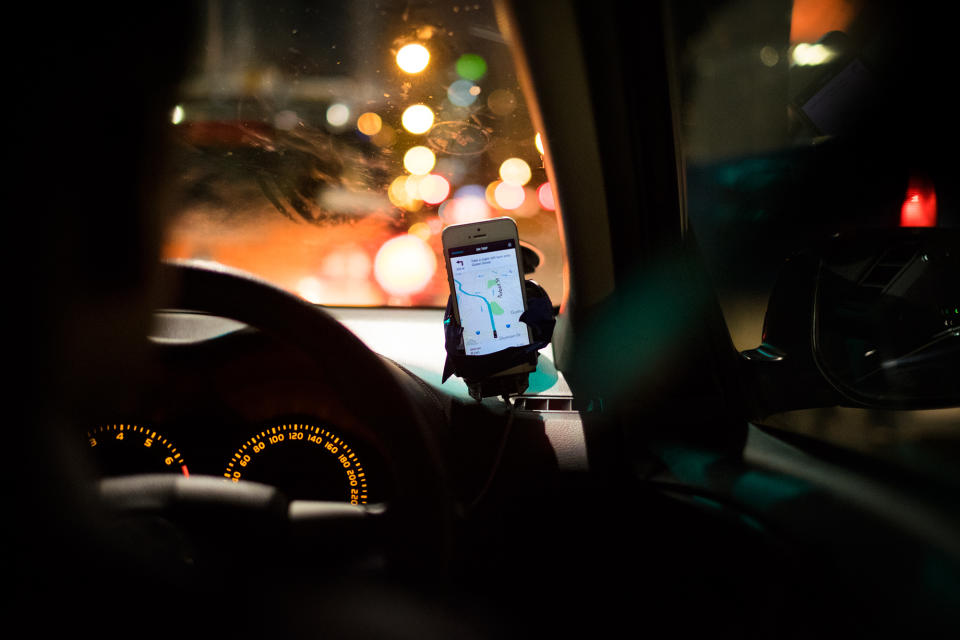3 ways Uber can help its drivers
The author of a new study on Uber’s economics made less than minimum wage over 16 weeks driving for the popular yet money-losing ride-hailing service—but that’s not his biggest gripe with the company.
“An Analysis of the Entrepreneurial Aspects of Uber’s Driver-Partner Platform,” written by Brown University adjunct lecturer Patrick McQuown and a team of his students in Brown’s engineering school, draws on McQuown’s experience as an Uber driver as well as interviews with 110 others to question Uber’s treatment of its independent workers.
“Uber’s business model puts into practice technologies and policies that frustrate and belittle drivers while not living up to its marketing on the financial rewards,” the report reads. It then makes three suggestions to fix that: better pay for shorter trips, rewards for higher ratings, and in-app tipping.
Driving a better bargain
McQuown signed up over the summer to be an Uber driver and then spent five weeks driving his Volvo XC90 full-time around Providence, Rhode Island, followed by 11 weeks of part-time driving.
He earned a 4.84-star rating, putting him in the top 10% of Connecticut-based drivers, and he said in an interview that he enjoyed the experience immensely.
“If you are an extrovert, it’s a hoot,” he said. “I made friends, I had great conversations, I learned a ton, I had a blast doing it.”
But it was not a terribly profitable use of his time. He calculated that 401 hours and 8,000 miles of driving earned $13.85 an hour—which, after deducting for gas, insurance, vehicle depreciation and AAA estimates for maintenance and tire expenses, yielded $9.23 an hour. That’s below Connecticut’s $9.60/hour minimum wage.
A 2015 paper commissioned by Uber reports a higher average hourly wage, $19.19, but the 2014 figures in that study predate rate cuts by Uber. The company also touts July 2016 data showing $732 median weekly revenue for Boston Uber drivers—which would be $18.30 at a 40-hour week, but that page doesn’t note their hours.
The Brown paper finds fault with the Uber app’s failure to tell drivers of a ride’s destination before pick-up: “It is not uncommon for drivers to drive 15 or more minutes to pick up a rider only to take them on a five minute trip, resulting in a payout of about $3 before any driver expenses.”
Drivers must make snap judgments, as the system nags those who don’t accept enough ride requests promptly enough and may log them off after enough declined requests.
The paper’s first recommendation: Charging a higher fare in those edge cases to cover a driver’s costs.
The report also critiques how the Uber driver app doesn’t suggest a duration of surge pricing, the temporarily elevated rates meant to draw more drivers to meet higher demand. One result: Drivers “pursue surges that may or may not be there only to be greeted with a suddenly dropping fare.”
Injecting some entrepreneurship
The most compelling critique in the paper covers the limited financial upside for drivers who surprise and delight passengers with great service.
Although the app shows an incoming driver’s rating and lets you decline him or her, it doesn’t offer a choice of drivers or prioritize those you rated highly before. Drivers can, however, find themselves kicked off if their rating drops below 4.6 stars.
This inability of providers to market themselves individually to customers is a key difference between Uber and differentiated “gig economy” markets such as Etsy or Airbnb. Summed up McQuown: “There is no entrepreneurship.”
Uber has set up some incentive programs for drivers—it runs a “Power Driver” program in San Francisco—but they reward a high number of trips, not high scores.
While Uber announced a new “Compliments” feature in November, it only lets you send a sticker to a driver’s app.
The report suggests two possible driver-rating reforms. Uber could convert it to a binary scheme—the ride was fine or it was bad, in which case its customer-relations staff can address the problem. Or it could begin providing non-virtual perks to the best drivers.
(For those of you have forgotten: Traditional taxi systems provide no such accountability, something I saw way too often in Washington before 2008 when taxi drivers regularly exploited the arbitrary and poorly-documented boundaries of the “zone fare” system to rip me off.)
Uber declined to speak on the record about the paper’s findings, although a publicist did point to its documentation and prior statements.
Tip: Please tip
Passengers can always compensate a good driver directly with a tip, but Uber’s app doesn’t let you add that to your charge. You can hand over cash (or, if the driver sets up these options, pay via Square or Venmo or another non-cash system), but then you have a separate item for an expense report or Schedule C tax form. And Uber only approved allowing its drivers to solicit tips after a June settlement of a class-action lawsuit.
Uber’s competitor Lyft, meanwhile, prompts you to tip and leaves you with a single expense for each ride. It’s yet another example of how the construction of an online platform shapes the behavior of the people on it.
After his experience as an Uber driver, McQuown says he remains a satisfied Uber rider who appreciates the service’s contribution to reducing drunk driving. “I use Uber all the time!” he said. But he makes a point of doing two things once he gets in an Uber: “I talk with every driver I’m with, contingent that they want to talk, and I tip in cash.”
Email Rob at rob@robpegoraro.com; follow him on Twitter at @robpegoraro.


